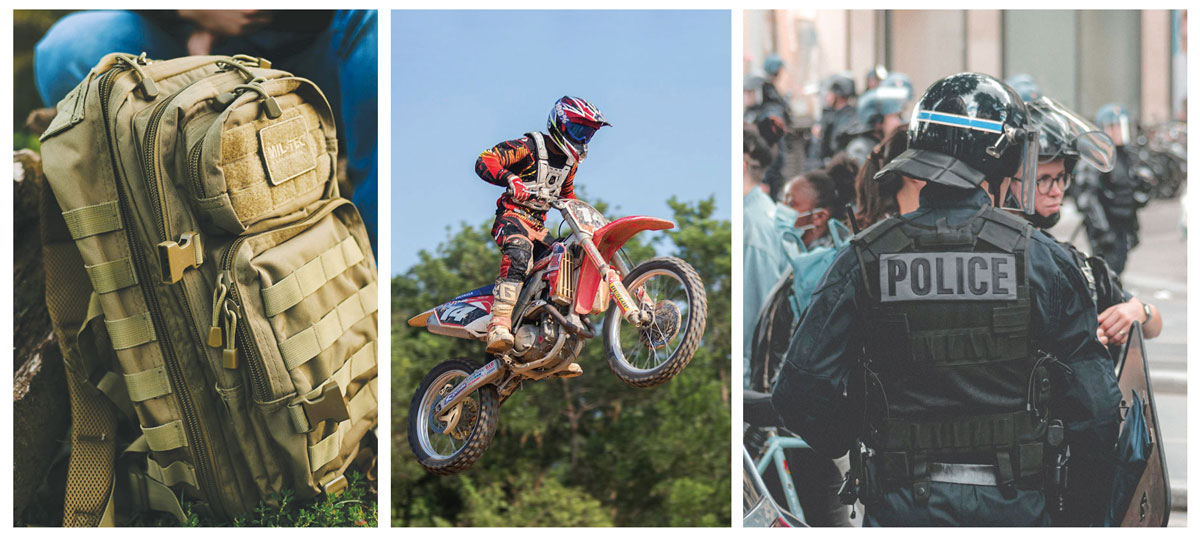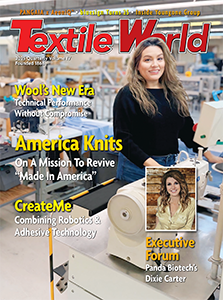 Blended fibers can raise protection levels and also increase end-user confidence in multi-hazard protective applications.
Blended fibers can raise protection levels and also increase end-user confidence in multi-hazard protective applications.
By Eve Lamb
As workplace risks evolve, with potential injuries from sharp metal edges and abrasive surfaces to thermal hazards, traditional, single-fiber protective fabrics often fall short. Enter hybridization: the strategic blending of high-performance fibers like high-performance polyethylene (HPPE), tungsten, steel, glass and basalt. These hybrid constructions are now reshaping personal protection boundaries, delivering multi-hazard resistance while maintaining wearer comfort and mobility.
From Monofiber To Multifiber: A Structural Shift
For decades, personal protective equipment (PPE) relied on monofiber solutions: aramids for heat, HPPE for cut or steel for slash protection. Yet each fiber has limitations: HPPE degrades above 80°C1, and steel adds considerable weight. Today, performance demands are shifting toward multi-fiber blends, engineered to meet the stringent requirements of EN 388:2016 and ANSI/ISEA 105-20162,3.
By combining fiber characteristics — tensile strength, rigidity, elasticity and thermal tolerance —engineers are tailoring protection profiles that meet or exceed the most demanding classifications.
HPPE: The Lightweight Backbone
HPPE remains the cornerstone of most cut-resistant fabrics because of its exceptional strength-to-weight ratio, which is up to 15 times stronger than steel by weight4. It provides core flexibility and breathability while anchoring the structure of hybrid yarns. Blends incorporating HPPE with glass, steel or tungsten leverage shock-absorbing capabilities, allowing stiffer fibers to act as deflection barriers. This synergy delivers superior protection without bulk.
Glass & Basalt: Sharp Defense, Thermal Edge
Glass fiber contributes high rigidity and puncture resistance, but its brittleness can hinder comfort. Basalt, a naturally derived volcanic fiber, is gaining traction as a heat- and chemically resistant alternative. Withstanding temperatures up to 982°C and offering smoother yarn handling, basalt is now a compelling substitute for glass or aramid blends5,6. Basalt’s lower flammability and improved chemical durability make it ideal for applications involving heat, corrosion or frequent abrasion.
Metal Yarns: When Strength Demands Edge
Metallic filaments, primarily stainless steel, have long enhanced cut-resistant gloves and garments. With a Mohs hardness of 7.5 and a melting point of 3,422°C, tungsten microfilaments deliver extreme slash and puncture resistance in lightweight configurations7. When integrated into knitted HPPE or basalt blends, these metals help garments reach EN 388 Cut Level F and ANSI A7–A9, with minimal ergonomic compromise.
Applications Beyond Gloves
While gloves remain the most visible application, hybrid protective fabrics are expanding into new fields, including:
- Riot control and public order suits — offering slash and puncture protection;
- Protective uniforms for correctional and detention facility staff;
- Every day, urban security apparel— discreet, slash-resistant garments for private security;
- Bite-resistant garments for mental health and special education professionals;
- Seclusion wear and protective clothing for high-risk patients;
- Cut-resistant workwear for steel, glass and metal fabrication industries;
- Abrasion-resistant sleeves and aprons for meat processing, butchery and food production;
- Multi-threat garments for recycling and waste management workers handling sharp or abrasive materials;
- Protective wear for automotive assembly and maintenance involving sharp components;
- Slash- and cut-resistant sports apparel such as hockey socks, skating, skiing and fencing base layers;
- Motorcycle base layers with integrated cut and impact abrasion protection;
- Footwear reinforcements for extreme sports including climbing, trail running, skating and snow-boarding;
- Protective underlayers for equestrian and contact sports;
- Lightweight slash- and stab-resistant garments for civilian use in high-risk areas;
- Travel wear and backpacks with integrated cut protection for anti-theft protection;
- Tactical apparel for military or special operations; and
- High-resistance gear for search and rescue or firefighting when paired with heat-resistant fibers.
This growth reflects a shift toward wearable, ergonomic protection across industries where safety, movement, and aesthetics must coexist8, but also a sustainable angle, as garments and apparel will have an extended lifespan.

Yarn & Fabric Engineering: Protection By Design
The behavior of blended fabrics is influenced not just by fiber selection but also by yarn construction — core-spun, wrapped or twisted — knit architecture — flat, warp or 3D — and surface treatments. For instance, a glass and HPPE core-spun yarn in a flat-knit structure feels soft and elastic until it meets a blade. The moment stress is applied, the rigid inner fibers engage delivering what is known as “engineered resistance”9. This con-trolled activation enables garments to remain wearable without compromising safety. The future of protective textiles lies in engineered blends that merge strength, flexibility, thermal control and comfort. By harnessing the complementary properties of HPPE, steel, tungsten, glass, and basalt, fabric developers are no longer forced to choose between durability and wearability, instead achieving both. As industries demand more agile, multi-threat protection, blended fiber technologies are poised to become the new standard, raising not just protection levels, but also end-user confidence.
The Circularity Challenge
Hybrid fabrics pose significant recycling challenges due to mixed fiber content. A fully circular model is still much needed, and sustainability is becoming a driving force in the research and development of advanced PPE. Ultimately, the goal is to move from a linear model, where protective garments are made, used and discarded, to a circular economy where materials are recovered, repurposed or regenerated with minimal waste. This will likely mean a shift from “forever” blends to thoughtful hybridization for technical textiles, balancing safety and sustain-ability without sacrificing performance. Blended protective fabrics are the future of protection, but without a circular focus, they risk becoming tomorrow’s ecological problem. As the industry embraces innovation in material science and sustainable design, the next generation of PPE should protect the wearer and respect the planet.
References
1 DSM Protective Materials – HPPE Performance Characteristics
2 EN 388:2016 Standard for Protective Gloves Against Mechanical Risks
3 ANSI/ISEA 105-2016 Cut Resistance Classification
4 High-Performance Fibres: Fundamentals and Applications, Woodhead Publishing
5 BFC Research Group – Basalt Industry Analysis, 2023
6Mechanical and Thermal Performance of Basalt-Fibre-Reinforced Composites, Elsevier, 2022
7 Refractory Metals Handbook – Properties of Tungsten and Its Alloys
8 EU-OSHA Guidelines on PPE and Worker Comfort
9 Textile Research Journal, 2021 – “Advanced Yarn Structures for Technical Textiles”
Editor’s Note: Eve Lamb is a technical textile consultant with more than a decade of experience in protective fabric innovation, specializing in cut, abrasion, tear and puncture-resistant materials. She has supported strategic product launches and brand content development across PPE, defense, industrial, and sportswear sectors.
2025 Quarterly Issue III




